分子别名(Synonym)
PD-L1,CD274,B7-H1,PDCD1L1,PDCD1LG1
表达区间及表达系统(Source)
Human PD-L1, Fc Tag (PD1-H5258) is expressed from human 293 cells (HEK293). It contains AA Phe 19 - Arg 238 (Accession # NP_054862.1).
Predicted N-terminus: Phe 19
Request for sequence
蛋白结构(Molecular Characterization)

This protein carries a human IgG1 Fc tag at the C-terminus.
The protein has a calculated MW of 51.3 kDa. The protein migrates as 60-75 kDa under reducing (R) condition (SDS-PAGE) due to glycosylation.
内毒素(Endotoxin)
Less than 0.1 EU per μg by the LAL method.
纯度(Purity)
>95% as determined by SDS-PAGE.
>90% as determined by SEC-MALS.
制剂(Formulation)
Lyophilized from 0.22 μm filtered solution in PBS, pH7.4 with trehalose as protectant.
Contact us for customized product form or formulation.
重构方法(Reconstitution)
Please see Certificate of Analysis for specific instructions.
For best performance, we strongly recommend you to follow the reconstitution protocol provided in the CoA.
存储(Storage)
For long term storage, the product should be stored at lyophilized state at -20°C or lower.
Please avoid repeated freeze-thaw cycles.
This product is stable after storage at:
- -20°C to -70°C for 24 months in lyophilized state;
- -70°C for 12 months under sterile conditions after reconstitution.
电泳(SDS-PAGE)

Human PD-L1, Fc Tag on SDS-PAGE under reducing (R) condition. The gel was stained with Coomassie Blue. The purity of the protein is greater than 95%.
SEC-MALS

The purity of Human PD-L1, Fc Tag (Cat. No. PD1-H5258) is more than 90% and the molecular weight of this protein is around 115-150 kDa verified by SEC-MALS.
Report
活性(Bioactivity)-ELISA
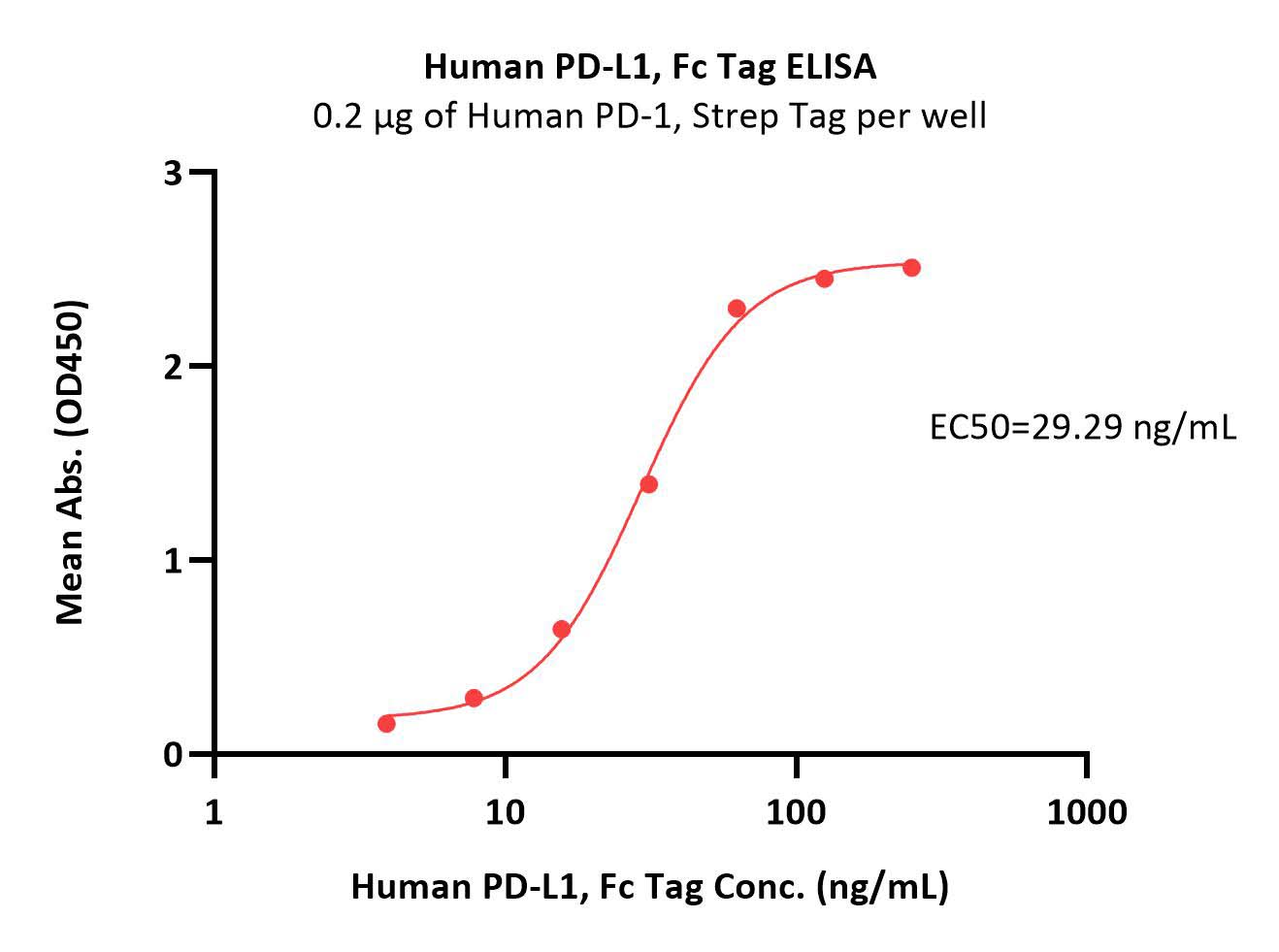
Immobilized Human PD-1 Protein, Twin-Strep Tag (Cat. No. PD1-H5286) at 2 μg/mL (100 μL/well) can bind Human PD-L1, Fc Tag (Cat. No. PD1-H5258) with a linear range of 0.2-13 ng/mL (QC tested).
Protocol
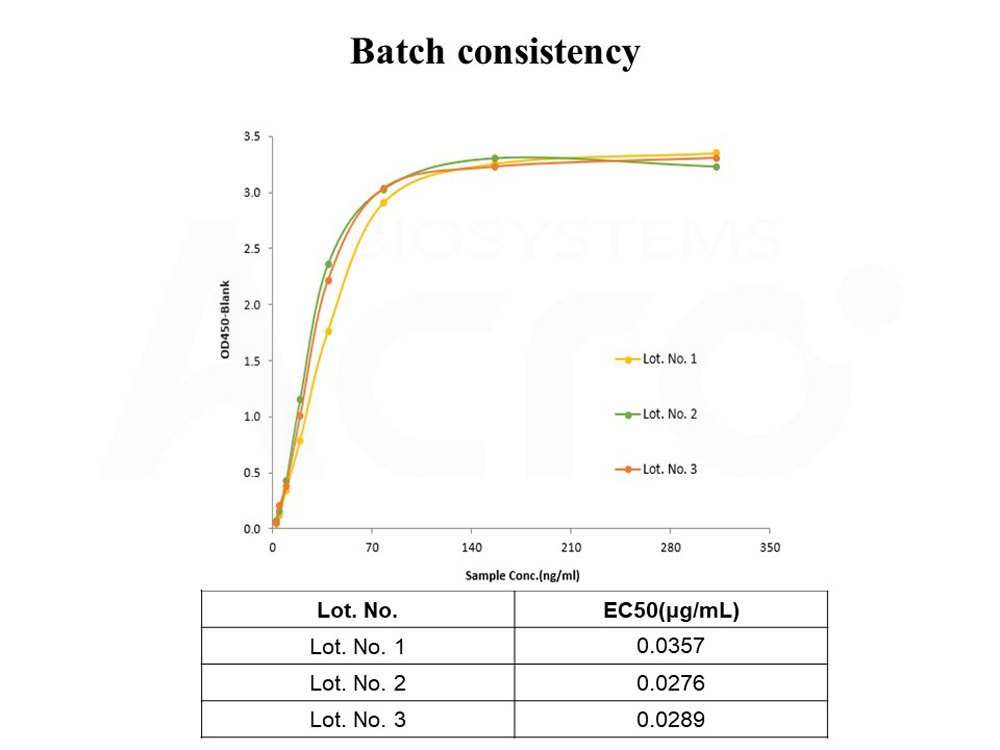

Immobilized Human PD-L1, Fc Tag (Cat. No. PD1-H5258) at 5 μg/mL (100 μL/well) can bind Anti-PD-L1 MAb with a linear range of 0.2-2 ng/mL (Routinely tested).
Protocol
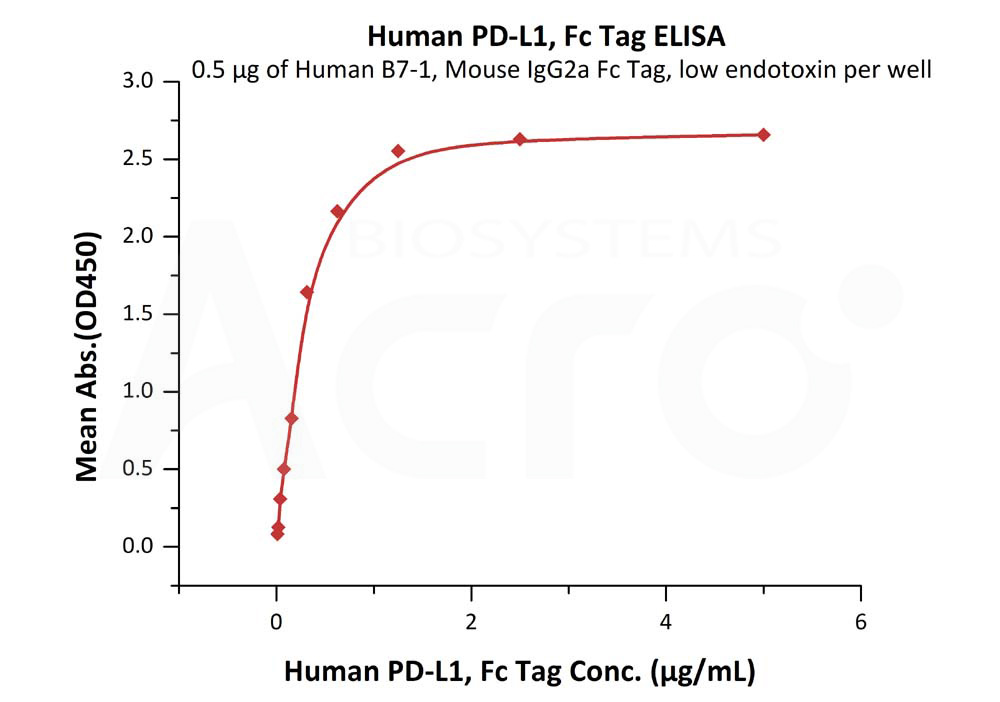
Immobilized Human B7-1, Mouse IgG2a Fc Tag, low endotoxin (Cat. No. B71-H52A4) at 5 μg/mL (100 μL/well) can bind Human PD-L1, Fc Tag (Cat. No. PD1-H5258) with a linear range of 0.01-0.313 μg/mL (Routinely tested).
Protocol
活性(Bioactivity)-BLI
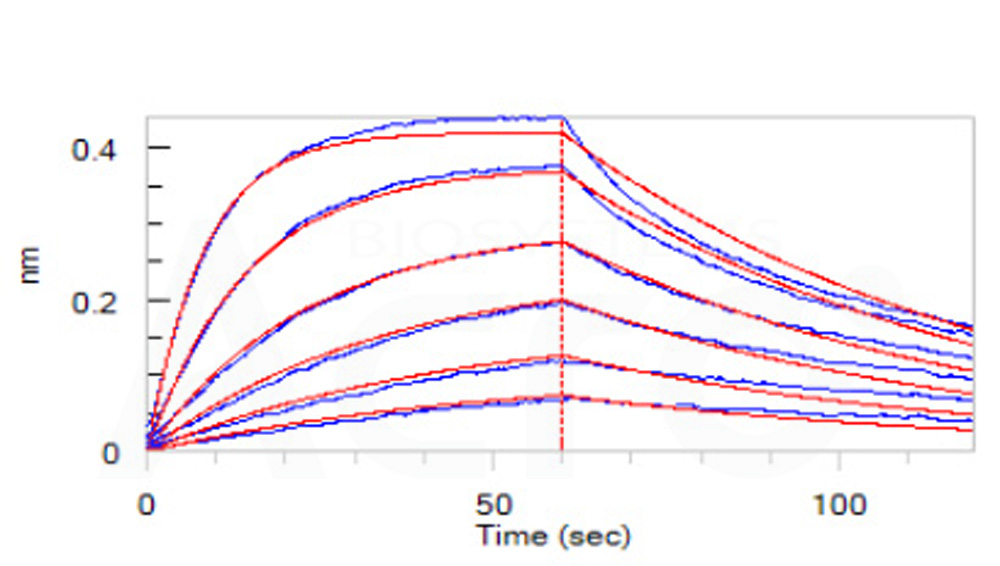
Loaded Human PD-1, His Tag (Cat. No. PD1-H5221) on HIS1K Biosensor, can bind Human PD-L1, Fc Tag (Cat. No. PD1-H5258) with an affinity constant of 38.9 nM as determined in BLI assay (ForteBio Octet Red96e) (Routinely tested).
Protocol

Loaded Human PD-L1, Fc Tag (Cat. No. PD1-H5258) on Protein A Biosensor, can bind Human B7-1, His Tag (Cat. No. B71-H5228) with an affinity constant of 18 μM as determined in BLI assay (ForteBio Octet Red96e) (Routinely tested).
Protocol

Loaded Human PD-L1, Fc Tag (Cat. No. PD1-H5258) on Protein A Biosensor, can bind Human Human PD-1, His Tag, low endotoxin (Cat. No. PD1-H522a) with an affinity constant of 4.8 μM as determined in BLI assay (ForteBio Octet Red96e) (Routinely tested).
Protocol
活性(Bioactivity)-FACS
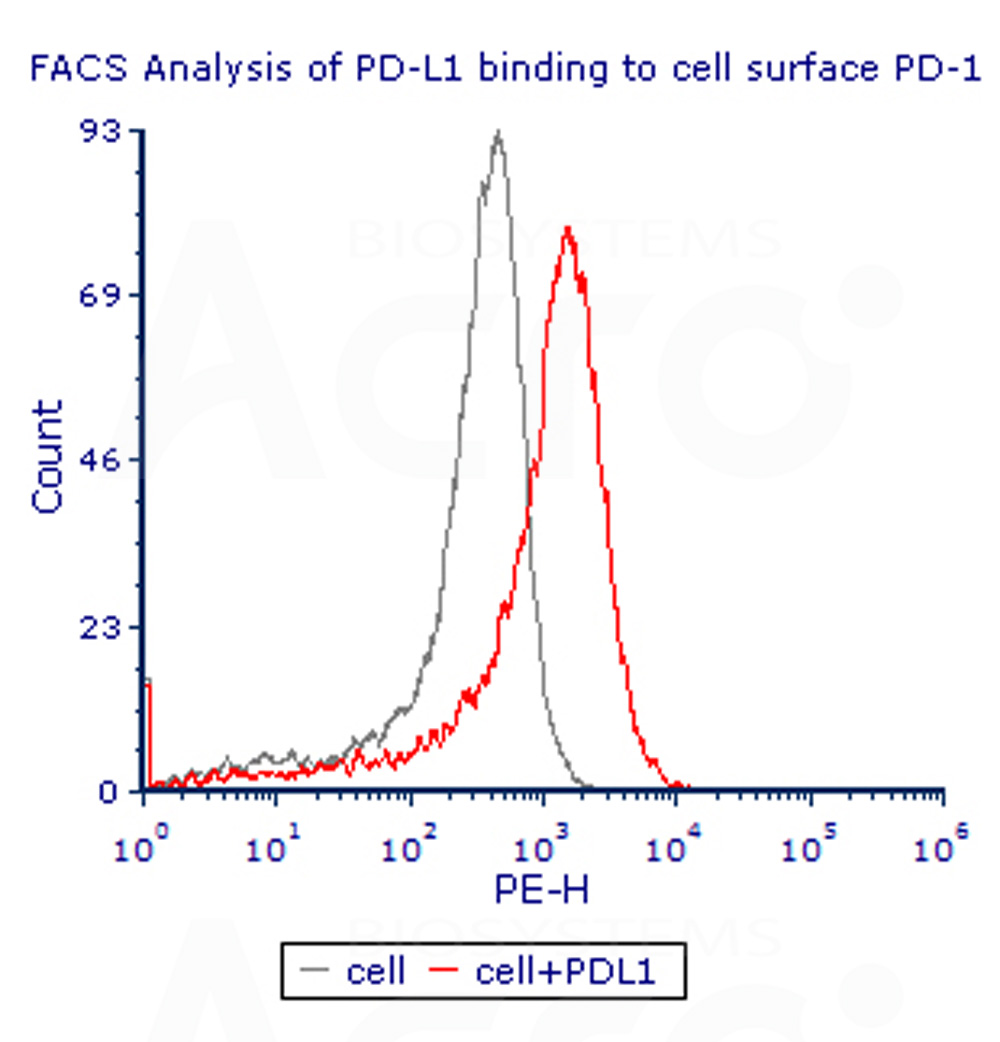
Flow Cytometry assay shows that Human PD-L1, Fc Tag (Cat. No. PD1-H5258) can bind to 293 cell overexpressing human PD-1. The concentration of PD-L1 used is 10 μg/mL (Routinely tested).
Protocol

FACS analysis shows that the binding of Human PD-L1, Fc Tag (Cat. No. PD1-H5258) to 293 overexpressing PD-1 was inhibited by increasing concentration of neutralizing Anti-PD-L1 antibody. The concentration of PD-L1 used is 10 μg/mL. The IC50 is 12.92 μg/mL (Routinely tested).
Protocol
活性(Bioactivity)-Bioactivity CELL BASE

Immobilized cell surface PD-1 (5x104 of cells per well) can bind Human PD-L1, Fc Tag (Cat. No. PD1-H5258) with an EC50 of 0.029 μg/mL (Routinely tested).
Protocol
背景(Background)
Programmed cell death 1 ligand 1 (PDL1) is also known as B7-H, B7H1, MGC142294, MGC142296, PD-L1, PDCD1L1 and PDCD1LG1,which is a member of the growing B7 family of immune molecules and is involved in the regulation of cellular and humoral immune responses.PDL1 is a cell surface immunoglobulin superfamily with two Ig-like domains within the extracellular region and a short cytoplasmic domain. This protein is broadly expressed in the majority of peripheral tissues as well as hematopoietic cells. Interaction between PDL1 and its receptors belonging to the CD28 family of molecules provide both stimulatory and inhibitory signals in regulating T cell activation and tolerance. PDL1 may inhibit ongoing T-cell responses by inducing apoptosis and arresting cell-cycle progression.























































 膜杰作
膜杰作 Star Staining
Star Staining












